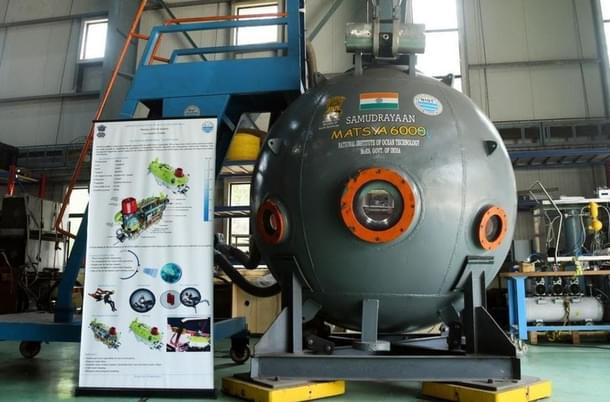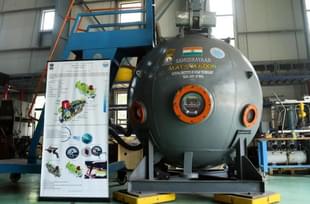Science
Samudrayaan: Here's Everything We Know About India's Plan To Send Three Explorers 6,000 Metre Deep In Bay Of Bengal
Abhay Rathore
Sep 11, 2023, 05:08 PM | Updated 05:08 PM IST
Save & read from anywhere!
Bookmark stories for easy access on any device or the Swarajya app.


Following a successful lunar mission, Indian scientists are gearing up for their next endeavor under Project Samudrayaan, which involves sending a team of three individuals 6,000 metre below the ocean's surface in an indigenous submersible.
The primary objective is to explore valuable metals and minerals, including cobalt, nickel, and manganese.
The submersible, named Matsya 6000, has been in development for nearly two years and is scheduled for its inaugural sea trials off the Chennai coast in the Bay of Bengal early in 2024.
Scientists have been meticulously reviewing its design, materials, testing procedures, certification, redundancy measures, and standard operating protocols, especially in light of the Titan incident in June 2023, when a submersible imploded while taking tourists to the Titanic wreck in the North Atlantic Ocean.
The National Institute of Ocean Technology (NIOT) is overseeing the development of Matsya 6000.
M. Ravichandran, Secretary of the Ministry of Earth Sciences, stated, "The Samudrayaan mission is part of the Deep Ocean Mission, and we plan to conduct sea trials at a depth of 500 meters in the first quarter of 2024."
The mission is anticipated to be completed by 2026, with the United States, Russia, Japan, France, and China being the only countries to have developed manned submersibles.
Apart from the quest for nickel, cobalt, manganese, hydrothermal sulfides, and gas hydrates, Matsya 6000 will also investigate the chemosynthetic biodiversity present in hydrothermal vents and low-temperature methane seeps in the ocean.
G A Ramadass, Director of NIOT, said that a 2.1-metre diameter sphere has been specially designed and constructed for Matsya 6000 to accommodate the three-person crew, as reported by Times Of India.
This sphere is constructed from an 80mm-thick titanium alloy, enabling it to withstand pressures equivalent to 600 times the atmospheric pressure at sea level at a depth of 6,000 metre.
While the submersible is designed for continuous operation of 12 to 16 hours, it is equipped with a 96-hour oxygen supply.
Ramadass emphasized the incorporation of redundancy measures throughout the submersible's systems. An official sea trial will be conducted and certified, with DNV-GL overseeing the certification process.
Standard operating procedures will also be followed, including deploying the submersible from a surface ship, which will remain in close proximity for efficient communication with the underwater vehicle.
Abhay Rathore is Staff Writer at Swarajya.





